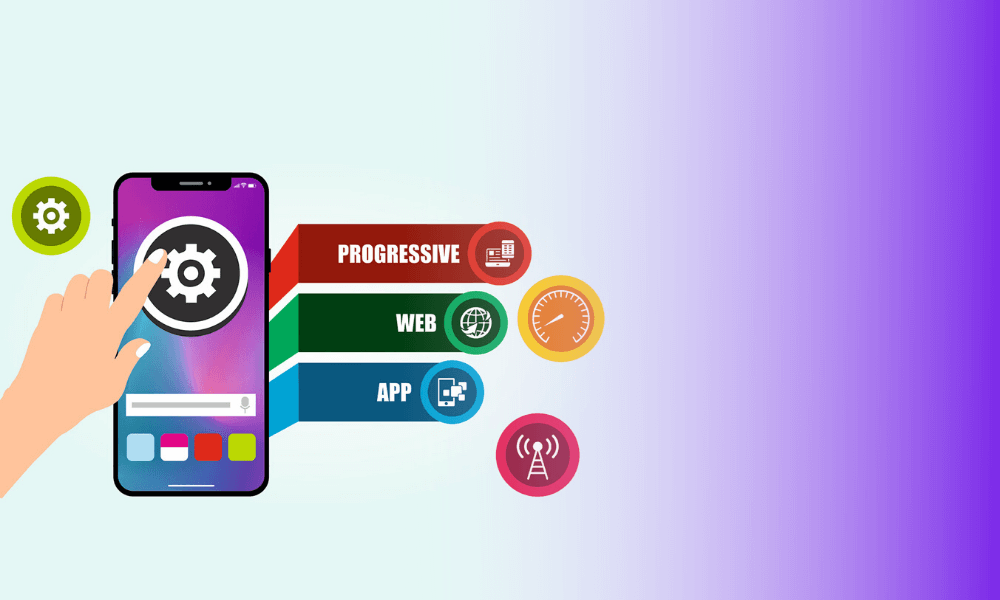The digital landscape has transformed dramatically with Progressive Web Apps (PWAs). It has become a critical technology for delivering seamless user experiences across multiple devices and platforms. Web Application Testing has emerged as a crucial discipline for ensuring these sophisticated applications perform consistently and reliably.
Modern app development demands a comprehensive approach to testing beyond traditional web application validation techniques.
PWAs represent a sophisticated intersection of web and mobile technologies, creating unique testing requirements that challenge conventional quality assurance methodologies. Developers and quality assurance professionals must utilize robust strategies to validate these complex applications across diverse technological ecosystems.
Understanding Progressive Web App Architecture
Progressive Web Apps combine the best features of web and mobile applications. It has created a hybrid technology that requires specialized testing approaches. These applications must function efficiently across multiple devices, platforms and network conditions. Web Application Testing becomes exponentially more complex with the introduction of advanced PWA technologies.
The architecture of PWAs introduces multiple layers of complexity:
- Service worker implementations
- Offline functionality
- Dynamic content caching
- Responsive design requirements
- Cross-platform compatibility
Cross Browser Testing: A Critical Validation Strategy
Cross Browser Testing demands a sophisticated approach that goes beyond superficial compatibility checks. Modern web applications require comprehensive validation strategies that address the intricate differences between browser rendering engines performance characteristics and JavaScript implementations.
The complexity of cross-browser testing involves multiple critical dimensions:
- Rendering Engine Variations
Different browsers interpret HTML, CSS and JavaScript with subtle yet significant variations. Testing must account for:
- Webkit rendering in Chrome and Safari
- Gecko engine nuances in Firefox
- Blink engine specifics in Chromium-based browsers
- EdgeHTML and Trident legacy considerations
- Performance Profiling
Each browser processes web applications differently. Comprehensive testing requires:
- JavaScript execution speed comparisons
- Memory utilization benchmarks
- Rendering performance metrics
- Resource loading characteristics
- Feature Support Analysis
Browser feature support varies dramatically. Testers must validate:
- ECMA Script compatibility
- Web API implementations
- CSS property support
- HTML5 and modern web standard adherence
- Responsive Design Validation
Ensure consistent user experiences across:
- Desktop browsers
- Mobile browser environments
- Tablet rendering configurations
- High-resolution displays
- Low-resolution screens
- Network Condition Simulations
Test application behavior under diverse network scenarios:
- Slow network connections
- Intermittent connectivity
- Bandwidth throttling
- Offline mode functionality
Successful Cross Browser Testing requires a holistic approach that combines automated testing, sophisticated emulation techniques and comprehensive validation frameworks.
Mobile-Specific Testing Considerations
Mobile testing for Progressive Web Apps demands a sophisticated approach that transcends traditional web application validation techniques. The intricate mobile ecosystem presents unique challenges that require comprehensive testing strategies designed to ensure optimal performance across diverse device configurations.
App Performance Testing
App Performance testing represents a critical dimension of mobile PWA validation. Developers must meticulously evaluate how applications perform on devices with varying hardware capabilities. This involves deep analysis of rendering speeds, touch interaction responsiveness and overall system resource utilization.
The goal is to create applications that deliver smooth, consistent experiences regardless of device specifications, whether running on high-end smartphones or budget-friendly mobile devices.
Network Resilience
Network resilience emerges as another crucial testing domain for mobile Progressive Web Apps. Mobile environments characteristically experience unpredictable network conditions ranging from high-speed connections to intermittent cellular data.
Testing must simulate these varied scenarios to validate application behavior during network transitions, offline modes and limited connectivity situations. Service worker implementations push notification reliability and background data synchronization become paramount considerations in this comprehensive validation process.
Device Compatibility Testing
Device compatibility testing addresses the fragmented mobile landscape. Testers must develop strategies that ensure consistent application performance with countless device configurations, operating systems, and screen resolutions.
This involves extensive testing across multiple platforms, examining how PWAs render adapt and function across different mobile ecosystems. Specialized attention must be given to touch interface interactions, sensor integrations and hardware-specific capabilities.
Security And Privacy
Security and privacy represent additional critical testing dimensions for mobile Progressive Web Apps. Validation processes must thoroughly examine permissions management sensor access protocols and data protection mechanisms. Testers must verify that applications provide transparent user controls while maintaining robust security standards across different mobile platforms.
Technical Validation
The ultimate objective of mobile-specific PWA testing transcends technical validation. It represents a holistic approach to creating mobile experiences that are performant, reliable and user-centric. Successful testing strategies combine technical rigor with a deep understanding of user expectations and mobile technology limitations.
Strategies for Comprehensive PWA Testing
Developing robust testing strategies for Progressive Web Apps requires a multidimensional approach that addresses the unique challenges of modern web technologies. Effective testing goes beyond traditional validation techniques and demands a holistic framework that ensures comprehensive application reliability.
Core Testing Strategies:
- Responsive Design Validation
- Implement pixel-perfect testing across multiple device resolutions
- Validate layout adaptability
- Test touch interaction responsiveness
- Verify UI component scaling
- Ensure consistent visual experience
- Performance Measurement Techniques
- Benchmark initial load times
- Analyze resource consumption
- Measure JavaScript execution performance
- Validate rendering speed
- Monitor memory management
- Track user interaction responsiveness
- Offline Functionality Checks
- Validate service worker implementations
- Test content caching mechanisms
- Verify offline data synchronization
- Simulate intermittent network conditions
- Ensure seamless background sync capabilities
- Network Resilience Testing
- Simulate various network conditions
- Test application behavior under:
- High latency environments
- Low bandwidth scenarios
- Complete network disconnection
- Validate graceful degradation strategies
- Cross-Platform Compatibility
- Test across multiple browser engines
- Validate consistent behavior on:
- Desktop browsers
- Mobile platforms
- Tablet configurations
- Ensure uniform functional integrity
These strategies create a comprehensive testing approach that addresses the complex nature of Progressive Web Applications. Success depends on a systematic, rigorous validation process that goes beyond surface-level testing.
Performance and User Experience Validation
Testing PWAs extends beyond functional validation. Performance metrics, user experience and application responsiveness become critical evaluation criteria. Quality assurance teams must develop comprehensive testing frameworks that simulate real-world usage scenarios.
Performance testing should focus on:
- Initial load times
- Resource utilization
- Rendering speed
- Interaction responsiveness
- Memory management
Advanced Testing Techniques for PWAs
Modern PWA testing requires sophisticated techniques that go beyond traditional validation approaches. Implement advanced testing strategies that leverage:
- Automated testing frameworks
- Comprehensive device emulation
- Network condition simulation
- Continuous integration testing
- Machine learning-powered validation tools
Ensuring Consistent User Experience
The ultimate goal of PWA testing is to deliver a consistent, reliable user experience across multiple platforms and devices. This requires a holistic approach considering technical performance, user interaction, and application reliability.
Successful PWA testing integrates:
- Comprehensive device coverage
- Realistic usage scenario simulation
- Automated and manual testing techniques
- Continuous monitoring and validation
Conclusion
Progressive Web Apps represent a significant advancement in web application technology. Effective testing strategies must evolve to address the unique challenges presented by these sophisticated applications. Quality assurance professionals must develop comprehensive approaches that validate technical performance, user experience and cross-platform reliability.
The future of web applications depends on our ability to create robust testing methodologies that adapt to rapidly changing technological landscapes. Success requires continuous learning, innovative testing techniques, and exceptional user experiences.











